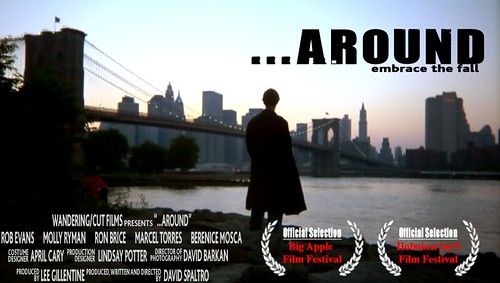The movie about a filmmaker struggling to make a picture but suffering some sort of creative block (i.e., a movie about itself) can be tiresome. Often, self-reflexive cinema is a chance to make something seem more insightful than it actually is. It’s as if the film’s awareness of itself is all that's needed to validate its artistic integrity. Yet what are the filmmakers actually saying? There are plenty of amazing and insightful movie-movies that use the subject of film as a springboard into more complex discussions. But it is so easy to get so caught up in cute little self-reflexive moments and lose sight of the larger, more meaningful implications. As Kael points out in her review of Fellini’s 8 1/2, the filmmaker is searching for some vague “idea.” What makes him a genius if he is so dependent on the epiphany of this one idea? I’m not quite as harsh as Kael is towards 8 1/2 and various other “party” movies she despises so much. But I’ve never embraced Fellini’s film like so many others because the focus is on the search for this one vague, self-centered, silly idea, and a lot of the meaning and feeling of the picture gets lost in the clever-looking shuffle.
So it was with a little apprehension that I approached David Spaltro’s directorial debut: …Around. It’s about a young man going to film school and forced to live on the streets since all his money is for tuition. Throughout this experience, he picks up friends, mentors, and love interests along the way.
The first 10 minutes or so don’t work. We see his parents explaining to him and his sister why they’re separating, his father choking up in the car, him getting in trouble at school, etc.. The point is, we see these scenes and recognize their significance but we aren’t allowed to really feel and inhabit them. Part of the problem, I think, is in the acting. Young Doyle’s lines aren’t delivered naturally, but with an awareness and bashfulness in front of the camera. Yet the big problem may be Doyle’s father. Too often I sensed the actor forcing, rather than becoming, the role. His facial expression showed “sadness” in the car scene, but it felt like a parody of emotion rather than a genuine expression of feeling. But that isn’t to say these first few minutes are without value. The scene with Doyle in his room, listening to his parents, is handled with the same poignancy as The 400 Blows.
Yet it is when Doyle emerges from the New York subway that the movie finally breathes and shakes off its awkwardness. The humor no longer feels so contrived, and you get the sense Spaltro is in his element. This is a picture that breathes of New York, and the pillow shots add to its authenticity and flavor. That atmosphere is focused around film school for the first year, and it’s refreshing to see something that’s willing to make fun of its own milieu. The movie giddily pokes fun at up-and-coming, buzzword-dropping young art students. The best kind of art, as Kael said, is playful.
Yet the movie’s strength lies in providing a formative, tragicomic human experience in lieu of exploring the director’s disembodied genius. That is, the movie becomes emotionally and socially relevant; not merely intellectual, but providing us with insight into how we live and interact with others. Doyle is intensely romantic; wanting to rescue Allyson from her possessive, overbearing boyfriend but not to commit to a serious relationship. Like Clark Gable in Gone with the Wind, he loves being the guy to kiss the girl, then leave in some noble pursuit. Only his civil war is an internal one; stemming from a need to understand himself before he commits to others. As he says to the mirror: “What’re you gonna do?” and “Hello stranger.” Part of that self-discovery comes when he confronts his mother on her deathbed. It doesn't quite offer the satisfaction we would like and the awkwardness with which Doyle tries to say "mom" is genuinely uncomfortable. That is, of course, its strength; satisfying moments in Hollywood movies, on the other hand, grant us the wish fulfillment we crave but not necessarily the one we actually get or deserve.
Spaltro has assembled a good cast that, for the most part, delivers their lines fluidly and naturally. Rob Evans has a passivity à la Edward Norton in The 25th Hour, where he’s taking a step back from the world and watching it go by. Doyle’s life, like Monty Brogan’s, is on hold. Molly Ryman shows promise, too. Her performance, however, is more hit-or-miss, and there are moments where she seems to come out of character and become aware of the camera. Yet when she hits the mark, it's a bull's-eye. She looks off-screen in the pensive, vulnerable sort of way Ingrid Bergman would.
David Spaltro shows promise. …Around is a vibrant, playful movie that brings some integrity to the Indie picture’s visual reputation. Lately, indiscriminate handheld work has passed for a “documentary” or “Indie” feel even when the dramatic or thematic elements of the picture don’t really call for it. Spaltro does not kill the picture with technique. For the most part, he uses it to underline the dramatic action of the story. …Around is a good start, and I hope David Spaltro only improves from here.

No comments:
Post a Comment